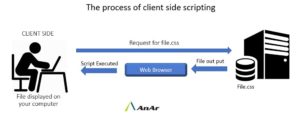If your web application is not performing well, either because of consistent lagging or because of longer loading times, you may want to consider shifting to Client-side scripting. Similar to JavaScript, you can add a Client-side script to your web page that the client can interact with through a web browser. This short code will enable the browser to reduce the load on your server. Essentially, the script eases the load of the web page allowing the user to run a web application smoothly. The code is active only from the client’s side and is particularly useful for creation of better responding applications.
Understanding web applications
Before divulging the details of client-side scripting, it is imperative to discuss the foundation of web applications. Web applications are different when compared to the regular applications that run on desktops. Essentially a desktop application communicates with a database server to import and export local data. All scripts involved in the code run on the computer’s local storage. However, in the case of web applications, there is no requisite that a web application has to be installed in the client’s local storage. An active internet connection established well through a web browser should be enough to run all kinds of web applications. Unlike desktop applications, the web application communicates with the servers through the web browser. For web applications, the client side is not very active; the read load is on the web server on the other side of the chain. This is where the transfer of bulk majority of data occurs.
The Need for Client-Side Scripting
As it is with most pieces of technology, continuous upgrades have made most of the web applications more advanced and versatile. The applications have come from a long way right from the basic scripts to advanced, more sophisticated, and more powerful. They now handle data and operate on the same level as small desktop applications. The data is handled using web servers that are solely responsible for acceptance and responding to incoming HTTP requests. As the web servers are under immense load from higher-end web applications, it could lead to slower responses of user-initiated HTTP requests.
Benefits of enabling client-side scripting
1. Faster responses to all user-initiated HTTP requests as the server has client-side scripting enabled to ease the workload on web application servers.
2. The application web server handles requests better and is subjected to lesser server issues
3. Ajax and jQuery option enables easier call to web-services





